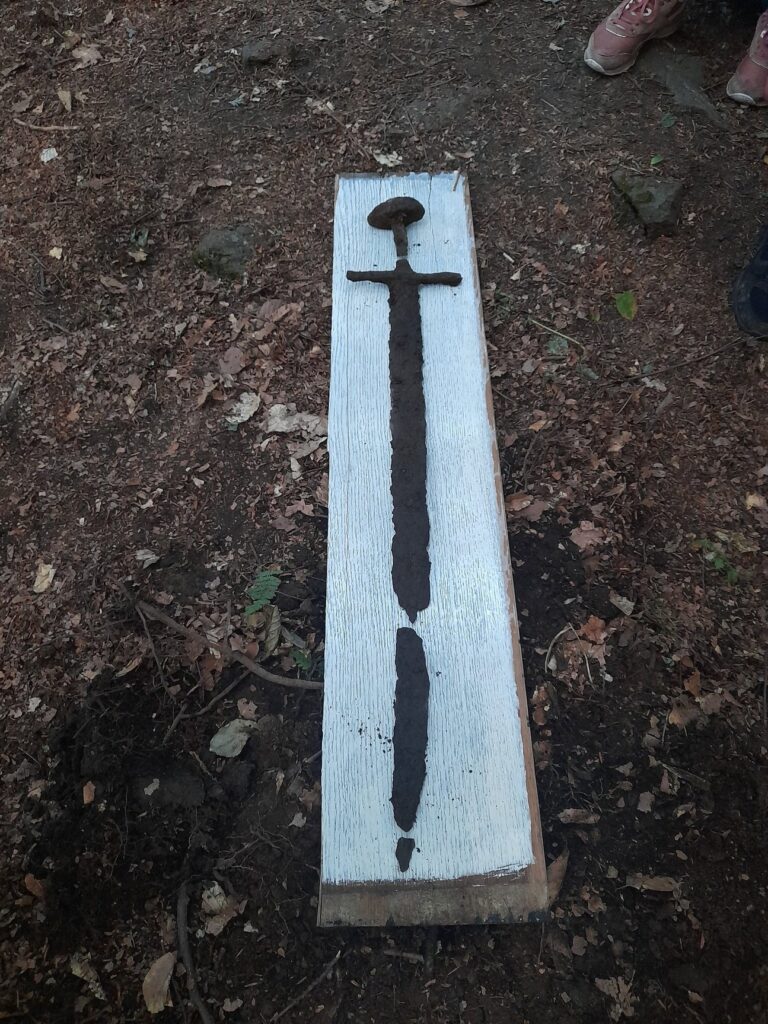1000-year old Sword uncovered in Southern Poland
An almost one-metre-long sword estimated to be around a thousand years old has been found in southern Poland. Historians say it is one of the most valuable discoveries in the region in a long time.
The sword was found only 30 centimetres below ground level near the village of Lewin Klodzki, close to the border with the Czech Republic, by Konrad Oczkowski who is exploring the area with the permission of archaeologists.
No remains were found alongside the sword to indicate who its owner was, and neither were any other metal objects.

Mr. Konrad Oczkowski explored the site with our permission and with all the permits – said archaeologist Marek Kowalski from the Wałbrzych branch of the Lower Silesian Monuments Conservation Department. – On Monday morning, he informed us about the possible discovery of an archaeological monument.
Mr Konrad was very professional. Since he was not an archaeologist, after removing the layer of soil and realizing it was a sword head, he covered and masked the monument with earth, marked the find’s location in a familiar way, and notified the conservation services. On Tuesday, July 19, archaeological services emerged at the site and picked up medieval weapons from the ground.
The sword is in good condition. However, it was deposited directly in the ground, so it was partially corroded due to oxygen ingress. The shaft is separated from the rest, and the blade is cracked at the blade. The sword was found in a place that restorers do not want to disclose yet. The fact is that there was a settlement in the area before 1945, but its origins date back only to the 17th century.
“Such a sword is priceless,” said archaeologist Marek Kowalski, quoted by Gazeta Wyborcza daily.

“It had the value of one or even several villages. So it undoubtedly belonged to some knight. Such things were not simply abandoned.”
It is not yet known whether the sword ended up underground in the 11th century or later. However, the expert who inspected the weapon, Dr Lech Marek from the Institute of Archaeology at the University of Wrocław, has no doubts regarding the sword’s age, said Kowalski.
“Identical swords have been excavated at Ostrów Lednicki, where one of the most important castles of the Piast state was,” Kowalski added, referring to the first historical ruling dynasty of Poland, which ruled Poland until the 14th century.
The first Piasts, probably of West Slavic and Lechitic tribe descent, appeared around 940 in the territory of Greater Poland (Wielkopolska).
The archaeologists speculate that there may have been a fortress near the site where the sword was found. In the 11th century, Bolesław the Brave, the first king of Poland, who was in conflict with the Czechs, ordered his son, Mieszko II, to invade Bohemia, today the westernmost and largest historical region of the Czech Republic.
The sword will now be subjected to a historical analysis, examined for metallography using CT scans in an attempt to find inscriptions despite the corroded surface, Kowalski told Gazeta Wyborcza.
This might help the researchers to determine where the sword was made and who was its potential owner.





